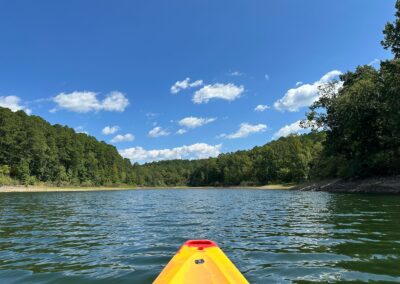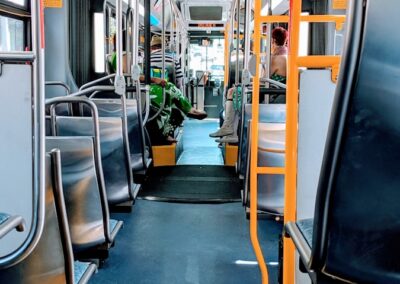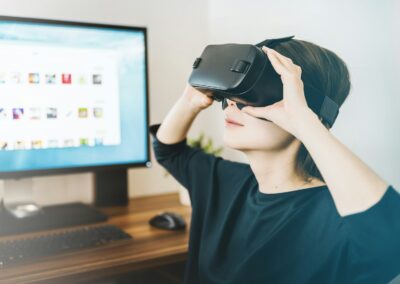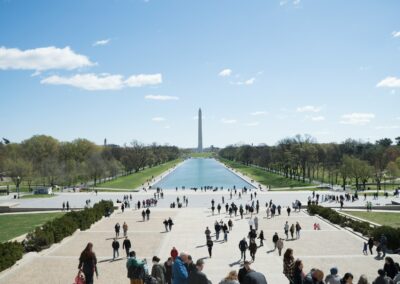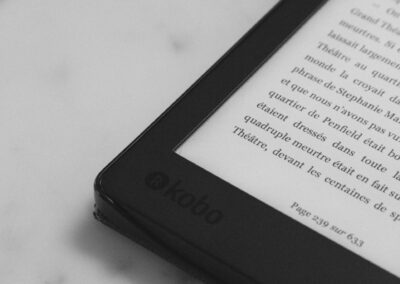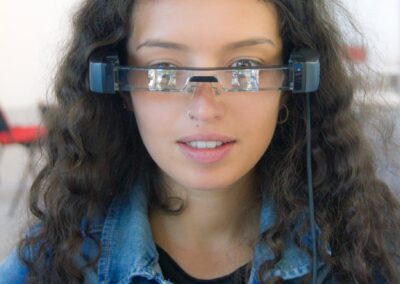The Transformative Power of Augmented Reality in Tourism
AR accessibility in tourism is revolutionizing the travel experience for people with disabilities by providing innovative solutions that enhance inclusivity and accessibility. Augmented reality (AR) offers unique opportunities to create more inclusive tourism experiences by providing real-time information, navigation support, and interactive content tailored to the needs of individuals with disabilities. In regions like Saudi Arabia and the UAE, where tourism is a significant economic driver, implementing AR technologies can make travel more accessible and enjoyable for all visitors.
One of the primary ways AR enhances accessibility in tourism is through real-time navigation assistance. Traditional maps and guidebooks often fail to meet the needs of travelers with disabilities, particularly those with visual or mobility impairments. AR applications can overlay digital information onto the physical environment, offering step-by-step directions, highlighting accessible routes, and identifying facilities such as ramps, elevators, and accessible restrooms. For instance, in cities like Riyadh and Dubai, AR navigation can guide tourists through complex sites like shopping malls, museums, and heritage sites, ensuring they can explore independently and confidently.
Moreover, AR can provide detailed descriptions and interactive content about landmarks and attractions, catering to visitors with different needs. For example, visually impaired travelers can use AR apps with audio descriptions that provide information about their surroundings, while those with hearing impairments can access sign language interpretations or text overlays. This inclusive approach not only enhances the travel experience for individuals with disabilities but also promotes a more inclusive and welcoming environment.
Implementing AR for Accessible Tourism in Saudi Arabia and UAE
The implementation of AR accessibility in tourism in Saudi Arabia and the UAE involves several critical considerations to ensure its effectiveness and sustainability. These regions are renowned for their rich cultural heritage, modern architecture, and luxurious amenities, attracting millions of tourists each year. By incorporating AR technology, they can set new standards for accessible tourism, benefiting both visitors and the local economy.
Firstly, developing user-friendly AR applications is essential. These apps should be intuitive and easy to navigate, with features specifically designed to assist travelers with disabilities. For instance, voice-activated commands can help visually impaired users access information hands-free, while customizable text sizes and contrast settings can aid those with visual impairments. Collaborating with disability advocacy groups during the development process can ensure that the apps meet the actual needs of users.
Secondly, investing in the necessary infrastructure to support AR technology is crucial. This includes installing beacons and sensors in tourist areas to provide accurate location data and ensure seamless AR experiences. For example, heritage sites like the Al-Ula archaeological area in Saudi Arabia or the Burj Khalifa in Dubai can benefit from AR-enhanced tours that offer immersive historical and cultural insights, accessible to all visitors regardless of their physical abilities.
Finally, promoting awareness and adoption of AR accessibility solutions is vital. Tourism authorities and businesses should actively market these technologies to potential visitors, highlighting the enhanced accessibility and convenience they offer. Training staff to assist tourists in using AR applications can further improve the overall experience, ensuring that everyone can take full advantage of the technology.
The Role of AR in Promoting Inclusive Tourism
The role of AR accessibility in tourism extends beyond providing practical assistance to fostering a sense of inclusivity and equality. By making travel more accessible, AR technology helps break down barriers that have traditionally excluded people with disabilities from fully participating in tourism activities. This shift towards inclusivity aligns with global movements advocating for the rights of individuals with disabilities and supports the principles of universal design.
AR can also play a significant role in educational tourism, making museums, galleries, and cultural sites more accessible. Interactive AR exhibits can provide multi-sensory experiences that cater to different learning styles and abilities. For example, AR can recreate historical events or bring ancient artifacts to life, offering an engaging and educational experience for all visitors. In Saudi Arabia, sites like the King Abdulaziz Center for World Culture (Ithra) can leverage AR to enhance their educational programs, making them accessible to a broader audience.
Furthermore, AR technology can help raise awareness about disability issues among the general public. By incorporating elements that simulate disabilities, such as visual or auditory impairments, AR applications can foster empathy and understanding among users. This can lead to a more inclusive society where the needs of individuals with disabilities are better recognized and addressed.
Conclusion: Embracing AR for Inclusive Tourism
AR accessibility in tourism offers a transformative approach to making travel more inclusive and enjoyable for people with disabilities. By leveraging the power of augmented reality, destinations like Saudi Arabia and the UAE can enhance their tourism offerings, attract a broader range of visitors, and set new benchmarks for accessible travel.
For business executives, mid-level managers, and entrepreneurs, investing in AR technology for accessible tourism represents not only a commitment to social responsibility but also a strategic opportunity to tap into a growing market. As AR technology continues to evolve, its potential to create more inclusive, engaging, and enjoyable travel experiences will only expand, offering new possibilities for innovation and growth in the tourism industry.
In conclusion, the integration of AR technology in tourism is a step towards a more inclusive world, where everyone, regardless of their abilities, can explore and enjoy the beauty and culture of different destinations. By prioritizing accessibility and inclusivity, we can create a travel industry that is welcoming and accommodating to all, ensuring that the joys and benefits of travel are accessible to everyone.
—
#ARAccessibility #InclusiveTourism #AugmentedReality #AccessibleTravel #SaudiArabia #UAE #Riyadh #Dubai #ArtificialIntelligence #Blockchain #TheMetaverse #ExecutiveCoaching #ModernTechnology #LeadershipSkills #BusinessSuccess #ProjectManagement



